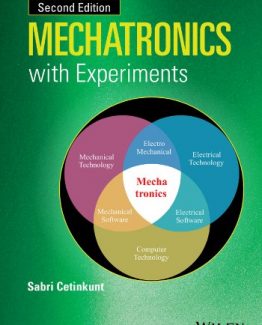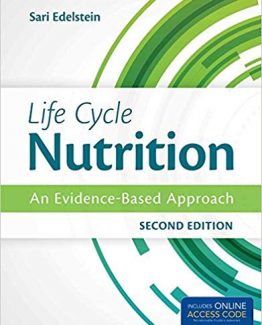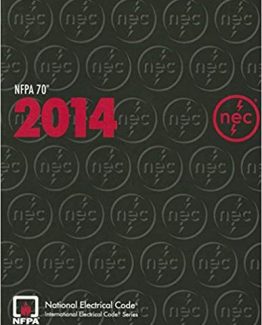Engineering Economy 8th Edition by Leland Blank, ISBN-13: 978-1260152814
[PDF eBook eTextbook]
- Publisher: McGraw Hill; 8th edition (February 2, 2017)
- Language: English
- 656 pages
- ISBN-10: 1260152812
- ISBN-13: 978-1260152814
Engineering Economy presents a crisp, bold new design using color, highlighting and icons to focus on important concepts, terms, equations and decision guidelines. There are new features, new topics (such as ethics and staged decision making), and new online tools; yet no compromise on coverage, examples, or the well-accepted writing style of this popular text. Solved examples, problems and case studies target many of the current engineering challenges in areas such as energy, ethics, the environment, and the world’s changing economics.
Table of Contents:
Preface to Eighth Edition xiv
LEARNING
STAGE 1
THE FUNDAMENTALS
Chapter 1 Foundations of Engineering Economy 2
1.1 Why Engineering Economy and the Time Value of Money are Important 3
1.2 Performing an Engineering Economy Study 5
1.3 Professional Ethics and Economic Decisions 7
1.4 Interest Rate and Rate of Return 10
1.5 Terminology and Symbols 14
1.6 Cash Flows: Estimation and Diagramming 15
1.7 Economic Equivalence 19
1.8 Simple and Compound Interest 22
1.9 Minimum Attractive Rate of Return 26
1.10 Introduction to Spreadsheet Use 27
Chapter Summary 31
Problems 31
Exercises for Spreadsheets 35
Additional Problems and FE Exam Review Questions 36
Case Study—Cost of Electricity with Renewable Sources Added 37
Chapter 2 Factors: How Time and Interest Affect Money 38
PE Progressive Example—The Steel Plant Case 39
2.1 Single-Amount Factors (F∕P and P∕F ) 39
2.2 Uniform Series Present Worth Factor and Capital Recovery
Factor (P∕A and A∕P) 43
2.3 Sinking Fund Factor and Uniform Series Compound Amount
Factor (A∕F and F∕A) 46
2.4 Factor Values for Untabulated i or n Values 48
2.5 Arithmetic Gradient Factors (P∕G and A∕G) 50
2.6 Geometric Gradient Series Factors 58
2.7 Determining i or n for Known Cash Flow Values 61
Chapter Summary 64
Problems 64
Exercises for Spreadsheets 68
Additional Problems and FE Exam Review Questions 69
Case Study—The Amazing Impact of Compound Interest 71
Chapter 3 Combining Factors and Spreadsheet Functions 72
3.1 Calculations for Uniform Series That Are Shifted 73
3.2 Calculations Involving Uniform Series and Randomly Placed Single Amounts 76
3.3 Calculations for Shifted Gradients 80
Chapter Summary 86
Problems 86
Exercises for Spreadsheets 92
Additional Problems and FE Exam Review Questions 93
Case Study—Preserving Land for Public Use 94
Chapter 4 Nominal and Effective Interest Rates 96
PE Progressive Example—The Credit Card Offer Case 97
4.1 Nominal and Effective Interest Rate Statements 98
4.2 Effective Annual Interest Rates 101
4.3 Effective Interest Rates for Any Time Period 107
4.4 Equivalence Relations: Payment Period
and Compounding Period 108
4.5 Equivalence Relations: Single Amounts with PP ≥ CP 109
4.6 Equivalence Relations: Series with PP ≥ CP 111
4.7 Equivalence Relations: Single Amounts and Series
with PP < CP 115
4.8 Effective Interest Rate for Continuous Compounding 116
4.9 Interest Rates That Vary Over Time 118
Chapter Summary 120
Problems 120
Exercises for Spreadsheets 125
Additional Problems and FE Exam Review Questions 125
Case Study—Is Owning a Home a Net Gain or Net Loss Over Time? 127
LEARNING
STAGE 2
BASIC ANALYSIS TOOLS
Chapter 5 Present Worth Analysis 130
PE Progressive Example—Water for Semiconductor
Manufacturing Case 131
5.1 Formulating Alternatives 131
5.2 Present Worth Analysis of Equal-Life Alternatives 133
5.3 Present Worth Analysis of Different-Life Alternatives 135
5.4 Future Worth Analysis 139
5.5 Capitalized Cost Analysis 140
Chapter Summary 144
Problems 144
Exercises for Spreadsheets 149
Additional Problems and FE Exam Review Questions 150
Case Study—Comparing Social Security Benefits 152
Chapter 6 Annual Worth Analysis 154
6.1 Advantages and Uses of Annual Worth Analysis 155
6.2 Calculation of Capital Recovery and AW Values 157
6.3 Evaluating Alternatives by Annual Worth Analysis 159
6.4 AW of a Permanent Investment 161
6.5 Life-Cycle Cost Analysis 164
Chapter Summary 168
Problems 168
Exercises for Spreadsheets 173
Additional Problems and FE Exam Review Questions 175
Case Study—Annual Worth Analysis—Then and Now 176
Chapter 7 Rate of Return Analysis: One Project 178
7.1 Interpretation of a Rate of Return Value 179
7.2 Rate of Return Calculation Using a PW or AW Relation 181
7.3 Special Considerations When Using the ROR Method 185
7.4 Multiple Rate of Return Values 186
7.5 Techniques to Remove Multiple Rates of Return 191
7.6 Rate of Return of a Bond Investment 197
Chapter Summary 200
Problems 200
Exercises for Spreadsheets 205
Additional Problems and FE Exam Review Questions 207
Case Study—Developing and Selling an Innovative Idea 209
Chapter 8 Rate of Return Analysis: Multiple Alternatives 210
8.1 Why Incremental Analysis Is Necessary 211
8.2 Calculation of Incremental Cash Flows for ROR Analysis 211
8.3 Interpretation of Rate of Return on the Extra Investment 214
8.4 Rate of Return Evaluation Using PW: Incremental and Breakeven (Two Alternatives) 215
8.5 Rate of Return Evaluation Using AW 221
8.6 Incremental ROR Analysis of Multiple (More than Two) Alternatives 222
8.7 All-in-One Spreadsheet Analysis 226
Chapter Summary 228
Problems 228
Exercises for Spreadsheets 233
Additional Problems and FE Exam Review Questions 234
Case Study—Peforming ROR Analysis for 3D Printer and IIoT Technology 235
Case Study—How a New Engineering Graduate Can Help His Father 236
Chapter 9 Benefit/Cost Analysis and Public Sector Economics 238
PE Progressive Example—Water Treatment Facility #3 Case 239
9.1 Public Sector Projects 240
9.2 Benefit/Cost Analysis of a Single Project 245
9.3 Incremental B/C Analysis (Two Alternatives) 248
9.4 Incremental B/C Analysis of Multiple (More than Two) Alternatives 252
9.5 Service Sector Projects and Cost-Effectiveness Analysis 256
9.6 Ethical Considerations in the Public Sector 260
Chapter Summary 261
Problems 262
Exercises for Spreadsheets 269
Additional Problems and FE Exam Review Questions 270
Case Study—Highway Lighting Options to Reduce Traffic Accidents 272
LEARNING
STAGE 2 EPILOGUE: SELECTING THE BASIC ANALYSIS TOOL
LEARNING
STAGE 3 MAKING BETTER DECISIONS
Chapter 10 Project Financing and Noneconomic Attributes 278
10.1 MARR Relation to the Cost of Capital 279
10.2 Debt-Equity Mix and Weighted Average Cost of Capital 281
10.3 Determination of the Cost of Debt Capital 283
10.4 Determination of the Cost of Equity Capital and the MARR 285
10.5 Effect of Debt-Equity Mix on Investment Risk 287
10.6 Multiple Attribute Analysis: An Introduction 290
10.7 Evaluation Measure for Multiple Attributes 294
Chapter Summary 295
Problems 296
Exercises for Spreadsheets 301
Additional Problems and FE Exam Review Questions 302
Case Study—Expanding a Business—Debt vs. Equity Financing? 303
Chapter 11 Replacement and Retention Decisions 304
PE Progressive Example—Keep or Replace the Kiln Case 305
11.1 Basics of a Replacement Study 306
11.2 Economic Service Life 308
11.3 Performing a Replacement Study 314
11.4 Additional Considerations in a Replacement Study 318
11.5 Replacement Study over a Specified Study Period 319
11.6 Replacement Value 324
Chapter Summary 324
Problems 325
Exercises for Spreadsheets 331
Additional Problems and FE Exam Review Questions 331
Case Study—A Pumper System with an ESL Problem 333
Chapter 12 Independent Projects with Budget Limitation 334
12.1 An Overview of Capital Rationing among Projects 335
12.2 Capital Rationing Using PW Analysis of Equal-Life Projects 337
12.3 Capital Rationing Using PW Analysis of Unequal-Life Projects 339
12.4 Capital Budgeting Problem Formulation Using Linear Programming 341
12.5 Additional Project Ranking Measures 344
Chapter Summary 346
Problems 346
Additional Problems and FE Exam Review Questions 351
Chapter 13 Breakeven and Payback Analysis 354
13.1 Breakeven Analysis for a Single Project 355
13.2 Breakeven Analysis Between Two Alternatives 359
13.3 Payback Analysis 362
13.4 More Breakeven and Payback Analysis on Spreadsheets 366
Chapter Summary 369
Problems 369
Exercises for Spreadsheets 374
Additional Problems and FE Exam Review Questions 375
Case Study—Water Treatment Plant Process Costs 376
LEARNING
STAGE 4
ROUNDING OUT THE STUDY
Chapter 14 Effects of Inflation 380
14.1 Understanding the Impact of Inflation 381
14.2 Present Worth Calculations Adjusted for Inflation 383
14.3 Future Worth Calculations Adjusted for Inflation 388
14.4 Capital Recovery Calculations Adjusted for Inflation 391
Chapter Summary 392
Problems 392
Additional Problems and FE Exam Review Questions 398
Case Study—Inflation Considerations for Stock
and Bond Investments 399
Chapter 15 Cost Estimation and Indirect Cost Allocation 400
15.1 Understanding How Cost Estimation Is Accomplished 401
15.2 Unit Method 404
15.3 Cost Indexes 405
15.4 Cost-Estimating Relationships: Cost-Capacity Equations 408
15.5 Cost-Estimating Relationships: Factor Method 409
15.6 Indirect Cost Rates and Allocation: The Traditional Method 411
15.7 Activity-Based Costing (ABC) for Indirect Costs 415
15.8 Making Estimates and Maintaining Ethical Practices 417
Chapter Summary 418
Problems 418
Additional Problems and FE Exam Review Questions 424
Case Study—Indirect Cost Analysis of Medical Equipment Manufacturing Costs 425
Case Study—Deceptive Acts Can Get You in Trouble 427
Chapter 16 Depreciation Methods 428
16.1 Depreciation Terminology 429
16.2 Straight Line (SL) Depreciation 432
16.3 Declining Balance (DB) and Double Declining Balance (DDB) Depreciation 433
16.4 Modified Accelerated Cost Recovery System (MACRS) 436
16.5 Determining the MACRS Recovery Period 440
16.6 Depletion Methods 441
Chapter Summary 443
Appendix 444
16A.1 Sum-of-Years-Digits (SYD) and Unit-of-Production (UOP) Depreciation 444
16A.2 Switching between Depreciation Methods 446
16A.3 Determination of MACRS Rates 449
Problems 452
Additional Problems and FE Exam Review Questions 455
Appendix Problems 456
Chapter 17 After-Tax Economic Analysis 458
17.1 Income Tax Terminology and Basic Relations 459
17.2 Calculation of Cash Flow after Taxes 462
17.3 Effect on Taxes of Different Depreciation Methods and
Recovery Periods 464
17.4 Depreciation Recapture and Capital Gains (Losses) 467
17.5 After-Tax Economic Evaluation 470
17.6 After-Tax Replacement Study 476
17.7 After-Tax Value-Added Analysis 479
17.8 After-Tax Analysis for International Projects 482
17.9 Value-Added Tax 484
Chapter Summary 486
Problems 487
Additional Problems and FE Exam Review Questions 496
Case Study—After-Tax Analysis for Business Expansion 497
Chapter 18 Sensitivity Analysis and Staged Decisions 498
18.1 Determining Sensitivity to Parameter Variation 499
18.2 Sensitivity Analysis Using Three Estimates 504
18.3 Estimate Variability and the Expected Value 505
18.4 Expected Value Computations for Alternatives 506
18.5 Staged Evaluation of Alternatives Using a Decision Tree 508
18.6 Real Options in Engineering Economics 512
Chapter Summary 517
Problems 517
Additional Problems and FE Exam Review Questions 524
Case Study—Sensitivity to the Economic Environment 525
Case Study—Sensitivity Analysis of Public Sector Projects—Water Supply Plans 525
Chapter 19 More on Variation and Decision Making under Risk 528
19.1 Interpretation of Certainty, Risk, and Uncertainty 529
19.2 Elements Important to Decision Making under Risk 532
19.3 Random Samples 537
19.4 Sample Estimates: Mean and Standard Deviation 540
19.5 Monte Carlo Sampling and Simulation Analysis 547
Chapter Summary 554
Problems 554
Additional Problems and FE Exam Review Questions 558
Case Study—Using Simulation and Three-Estimate Sensitivity Analysis 559
Appendix A Using Spreadsheets and Microsoft Excel® 561
A.1 Introduction to Using Excel 561
A.2 Organization (Layout) of the Spreadsheet 563
A.3 Spreadsheet Functions Important to Engineering
Economy (Alphabetical Order) 564
A.4 Goal Seek—A Tool for Breakeven and Sensitivity Analysis 572
A.5 Solver—An Optimizing Tool for Capital Budgeting, Breakeven,
and Sensitivity Analysis 573
A.6 Error Messages 574
Appendix B Basics of Accounting Reports and Business Ratios 575
B.1 The Balance Sheet 575
B.2 Income Statement and Cost of Goods Sold Statement 576
B.3 Business Ratios 577
Appendix C Code of Ethics for Engineers 580
Appendix D Alternate Methods for Equivalence Calculations 583
D.1 Using Programmable Calculators 583
D.2 Using the Summation of a Geometric Series 584
Appendix E Glossary of Concepts and Terms 587
E.1 Important Concepts and Guidelines 587
E.2 Symbols and Terms 590
Reference Materials 593
Factor Tables 595
Index 624
What makes us different?
• Instant Download
• Always Competitive Pricing
• 100% Privacy
• FREE Sample Available
• 24-7 LIVE Customer Support






Reviews
There are no reviews yet.